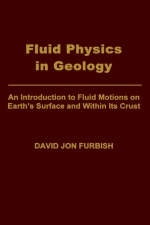
Fluid Physics in Geology
Oxford University Press Inc (Verlag)
978-0-19-507701-8 (ISBN)
Geologists, for training in fluid physics, usually must take courses offered only in physics or mathematics departments, filling in from physics, chemistry, hydrology, and engineering texts for geological applications. This text is aimed at preparing geology students who wish to pursue further work in fluid physics as well as illustrating the relevancy of problem from other fields to geological problems. Conventional in approaching fluid behaviour within an geological context, the book is unconventional in the sense that it offers a "geological motivation" for the material - and because the "Example" problems following each chapter are given lengthy treatment.
David Furbish is a Associate Professor in the Department of Geology, and an Associate of the Geophysical Fluid Dynamics Institute at Florida State University. His teaching and research primarily concern the fields of physical hydrology and geomorphology.
Preface
Chapter 1: Introduction
1.1: Topics and Strategies in the Study of Fluid Physics
1.2: Units and Mathematical Conventions
1.3: Scope of Mathematics Used in This Text
1.4: Example Problems
1.5: Reading
Chapter 2: Fluids and Porous Media as Continua
2.1: Mean Free Path
2.2: Mathematical and Physical Points
2.3: Representative Elementary Volume
2.4: Example Problems
2.5: Reading
Chapter 3: Mechanical Properties of Fluids and Porous Media
3.1: Body and Surface Forces
3.2: Ideal Versus Real Fluids
3.3: Density
3.4: Fluid Rheology and Shear Viscosity
3.5: Compressibility
3.6: Surface Tension
3.7: Example Problems
3.8: Reading
Chapter 4: Thermodynamical Properties of Fluids
4.1: Specific Heat
4.2: Heat Conduction
4.3: Fluid Phases
4.4: Equations of State
4.5: Thermodynamic State and the First Law of Thermodynamics
4.6: Isobaric and Isothermal Processes
4.7: Adiabatic Processes
4.8: Compressibility and Thermal Expansion
4.9: Bulk Viscosity
4.10: Example Problems
4.11: Reading
Chapter 5: Dimensional Analysis and Similtude
5.1: Dimensional Homogeneity
5.2: Dimensional Quantities
5.3: Buckingham Pi Theorem
5.4: Geometrical Similtude
5.5: Dynamical Similtude
5.6: Characteristic Dimensionless Quantities
5.7: Example Problems
5.8: Reading
Chapter 6: Fluid Statics and Buoyancy
6.1: Static Pressure
6.2: Equation of Fluid Statics
6.3: Hydrostatic Equation
6.4: Hypsometric Equations
6.5: Buoyancy
6.6: Stability of a Thermally Stratified Fluid
6.7: Example Problems
6.8: Reading
Chapter 7: Fluid Kinematics
7.1: Qualitative Descriptions of Motion
7.2: Substantive Derivative
7.3: Example Problems
7.4: Reading
Chapter 8: Conservation of Mass
8.1: Continuity in Cartesian Coordinates
8.2: Continuity of Solutes
8.3: Continuity in Large Control Volumes
8.4: Example Problems
8.5: Reading
Chapter 9: Conservation of Energy
9.1: Energy Equation
9.2: Hubbert's Potential
9.3: Example Problems
9.4: Reading
Chapter 10: Inviscid Flows
10.1: Euler's Equations
10.2: Bernoulli's Equation
10.3: Example Problems
10.4: Reading
Chapter 11: Vorticity and Fluid Strain
11.1: Flow with Rotation
11.2: Vorticity
11.3: Fluid Strain
11.4: Example Problems
11.5: Reading
Chapter 12: Viscous Flows
12.1: Viscous Forces
12.2: Newtonian Fluids
12.3: Incompresible Newtonian Flows
12.4: Non-Newtonian Fluids: The Example of Glacier Ice
12.5: Example Problems
12.6: Reading
Chapter 13: Porous Media Flows
13.1:
13.2: Equations of Motion
13.3: Advection-Dispertion Equation
13.4: Energy Equation
13.5: Example Problems
13.6: Reading
Chapter 14: Turbulent Flows
14.1: Onset of Turbulence
14.2: Time-Averaged Velocities and Pressure
14.3: Reynolds Streses
14.4: Time-Averaged Continuity and Navier-Stokes Equations
14.5: Fluctuating Velocity Components
14.6: Production and Dissipation of Turbulence Energy
14.7: Example Problems
14.8: Reading
Chapter 15: Turbulent Boundary-Level Shear Flows
15.1: Turbulent Boundary-Level Development
15.2: Prandtl's Mixing-Length Hypothesis
15.3: Mixing-Length and Eddy-Viscosity Distributions
15.4: Logarithmic Velocity Law
15.5: Turbulent Flow over Rough Boundaries
15.6: Production and Dissipation of Turbulence Energy
15.7: Turbulent Flow and Darcy's Law
15.8: Example Problems
15.9: Reading
Chapter 16: Thermally Driven Flows
16.1: Boussinesq Approximation
16.2: Dimensionless Quantities
16.3: Laboratory Experiments with Rayleigh-Benard and Hele-Shaw Flows
16.4: Convection in Pourous Media
16.5: Example Problems
16.6: Reading
Chapter 17: Appendixes
17.1: Formulae in Vector Analysis
17.2: Orthogonal Curvilinear Coordinates
17.3: Notation
References
Subject Index
| Erscheint lt. Verlag | 9.1.1997 |
|---|---|
| Zusatzinfo | halftones, numerous line figures |
| Verlagsort | New York |
| Sprache | englisch |
| Maße | 152 x 229 mm |
| Gewicht | 898 g |
| Themenwelt | Naturwissenschaften ► Geowissenschaften ► Geologie |
| Naturwissenschaften ► Physik / Astronomie ► Strömungsmechanik | |
| ISBN-10 | 0-19-507701-6 / 0195077016 |
| ISBN-13 | 978-0-19-507701-8 / 9780195077018 |
| Zustand | Neuware |
| Haben Sie eine Frage zum Produkt? |
aus dem Bereich


